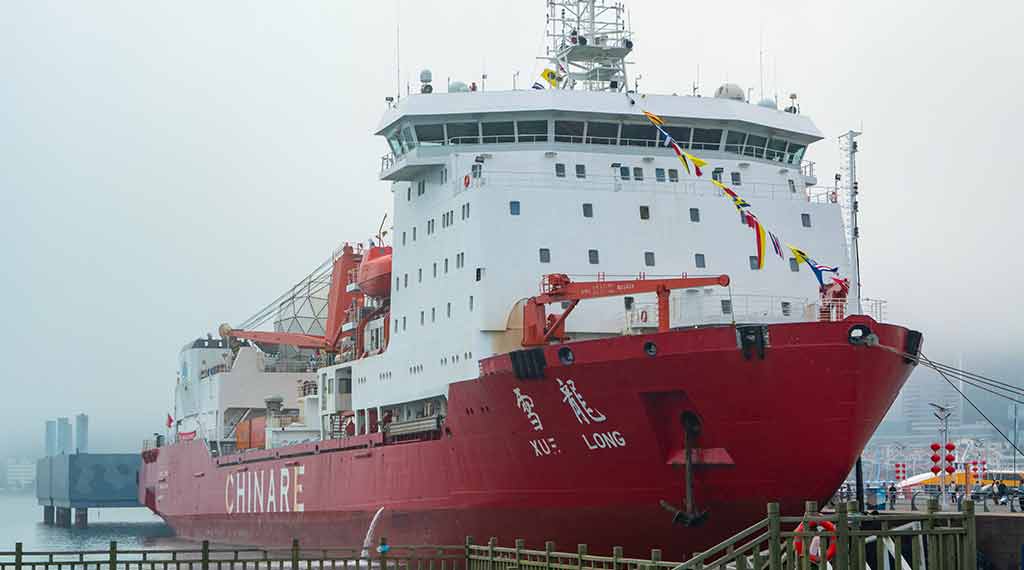US should speed up bolstering its Arctic strategy to counter China’s ambitions

The heydays of the massive construction efforts of the Cold War American presence in the Arctic, such as Camp Century and Project Iceworm, are long gone. Meanwhile, while Chinese people are struggling with a stagnating economy, Beijing is spending money on its Arctic ambitions, such as building and operating multiple icebreakers, and establishing a new northern naval base with Russia and North Korea to add reality to its Arctic claim.
In a 2018 Arctic Policy, Beijing asserted, “Geographically, China is a ‘Near-Arctic State,’ one of the continental States that are closest to the Arctic Circle.” This is an expansive definition, with many countries potentially being able to assert the same claim.
The United States first established a formal Arctic Policy in 1971 after more than 20 years of extensive building in the Arctic, including the Ballistic Missile Early Warning System (BMEWS) and forward bases for the Strategic Air Command. This included atomic-powered Camp Century in Greenland, which was the cover for Project Iceworm, a secret proposed network of mobile under-ice missiles.
The United States has responded to the Chinese regime’s assertions of being a near-Arctic state with aggressive updates of policies and strategies during the Biden administration, which is an important procedural step. The new American policies and strategies for the Arctic are voluminous with abstract, aspirational, and platitudinal statements asserting coordination, engagement, and partnerships. Still, policies and strategies need to be backed up with evidence of action supporting the policies and assertions. Such efforts and resources should include ships, bases, construction, transit, and presence.
The US Has 2 (Broken) Icebreakers
Although the polar ice is receding for the time being, opening historic new trade routes between Asia and Europe, large ships with ice-breaking capability are still vital to maintaining the routes and national presence year-round.
The United States currently, on paper, has two icebreakers to serve both the Arctic and Antarctica. Unfortunately, the U.S. Coast Guard Cutter (USCGC) Healy had to limp back in August from the beginning of its Arctic deployment on one engine due to an engineering compartment fire. The ship is aging, and spare parts are not readily available. The Coast Guard’s other icebreaker, the USCGC Polar Star, just returned from Mare Island, California, finishing a piecemeal four-year effort to keep the 50-year-old ship in operation for another year.
The Coast Guard has embarked upon a new program with the ambitious goal of six new icebreakers. However, this effort has proceeded slowly for years and is now facing substantial cost overruns and new delays, forcing the first delivery in 2029.
In July, the White House established an agreement with Canada and new NATO member Finland for an international partnership on icebreaker construction. It’s unclear if this arrangement will supplant and cancel the existing Coast Guard program, which has become a program management debacle.
The Coast Guard is buying a used commercial vessel for $125 million as an interim measure. Small military exercises are conducted at periodic intervals to be visual and demonstrative. Still, significant new facilities like the massive Arctic construction projects of the Cold War are not in the plans.
China’s Arctic Build-up
Meanwhile, China has delivered four icebreakers since 2018, and more are on the way, including a large, nuclear-powered icebreaker. “The Polar Silk Road will be cleared with Chinese icebreakers,” wrote Jeremy Greenwood in an op-ed published by the Brookings Institute. Part of the brisk pace of deliveries for Chinese Arctic capabilities will be a large vessel capable of carrying, launching, and operating large undersea “research” vessels. Such a capability could have distinct and significant dual-use implications, meaning military and intelligence research could be conducted as readily as “scientific” research.
The Chinese now regularly operate ships in the Bering Sea above the American Aleutian Island chain. Below the Aleutian Islands, a first-of-a-kind joint patrol with Russian and Chinese nuclear-capable bombers occurred in July. Chinese and Russian naval vessels have regularly loitered in and around the Aleutian Islands, a provocation and potential violation of the concept of “innocent passage“ through the islands of others.
Much of China and Russia’s air and sea activity has occurred around the valuable, important, but vulnerable Cobra Dane long-range radar on Shemya Island, almost at the tip of the Aleutian Islands. The facility on Shemya is far from other U.S. forces and has little defense against a missile strike or special operations raid.
- Taiwan mobilizes 400,000 to bolster civil defense - November 1, 2024
- A way forward on Taiwan? - September 28, 2024
- US should speed up bolstering its Arctic strategy to counter China’s ambitions - September 16, 2024
